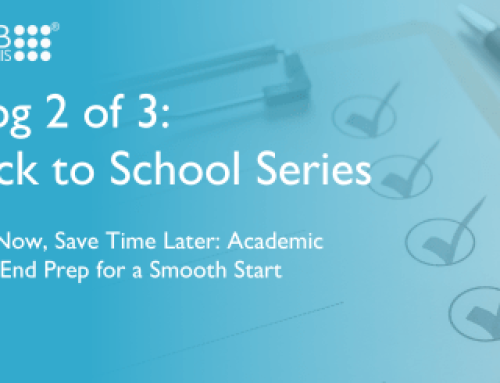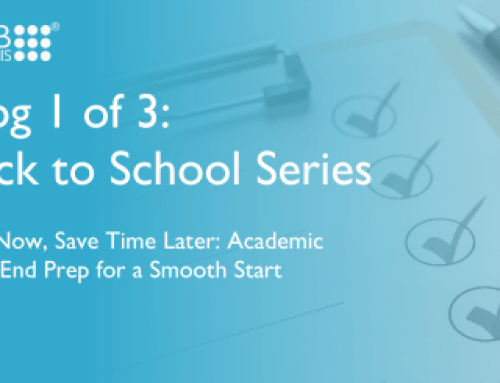Independent and international schools with less than 100 pupils offer something truly unique: a personalised, close-knit environment where teachers can dedicate time to each individual student. This level of attention is what sets smaller schools apart from their larger counterparts, ensuring that every child gets the support they need to thrive.
However, managing a smaller school can present its own set of challenges. From limited resources to growing administrative demands, smaller independent and international schools often face difficulties in balancing the personalised care they offer with the need for efficiency. In today’s fast-paced educational landscape, finding ways to save time and streamline processes is more important than ever.
One way that smaller independent and international schools can improve efficiency and set themselves up for growth is by investing in an management information system. While the initial cost of these systems may seem daunting, many are charged on a per-pupil basis, meaning the investment can scale with your school as it grows. The time saved and the operational efficiencies they unlock can enable smaller schools to scale more effectively and focus on what matters most: delivering an outstanding education.
The Challenges: Limited Resources and Overburdened Staff in Independent and International Schools
For smaller independent and international schools, the pressure to deliver exceptional education with fewer resources can be overwhelming. In many cases, a small staff is required to wear multiple hats; teaching, administering, and even managing day-to-day school operations. Without the right tools in place, this can lead to inefficiencies, burnout, and, in some cases, a negative impact on the quality of education provided.
Teacher Burnout:
Teachers at small independent and international schools often find themselves bogged down by administrative tasks. Whether it’s managing assessments, recording attendance, or compiling reports, these duties take valuable time away from engaging with students and creating high-quality lessons.
Training Costs and Time:
Introducing new software or technologies can seem like a daunting task for schools with limited staff. The time and resources required to train staff on new systems can be a barrier for smaller schools. However, the long-term benefits often outweigh these initial hurdles.
Challenges with Growth:
Small independent and international schools often have big aspirations but lack the infrastructure to manage larger student bodies or more complex administrative needs. As these schools grow, managing increased student data, assessments, and reporting can quickly become overwhelming, especially if systems are not centralised or automated.
The Benefits: Time-Saving and Streamlined Operations for Independent and International Schools
Investing in an academic management system offers small independent and international schools a host of benefits, from time-saving efficiencies to improved teacher retention. Here’s how:
1. Time Savings Through Automation:
Integrated academic systems such as HUBmis make essential administrative tasks like attendance tracking, grade reporting, and assessment management as simple as possible. By centralising these tasks, teachers and administrators can save hours each week, enabling them to focus on more meaningful activities such as lesson planning and student engagement.
2. Less Administrative Burden:
Small independent and international schools often operate with limited administrative support, which makes it crucial to optimise every process. By using an academic system to streamline data entry, reporting, and record-keeping, schools can reduce the chances of human error and improve efficiency. With fewer administrative burdens, staff can concentrate on their core tasks.
3. Simplified Staff Onboarding:
Onboarding new teachers at small independent and international schools can be challenging, especially when systems and tools are complicated. Choosing a user-friendly academic system that’s easy to learn reduces the time and cost required for training. New staff can become productive more quickly, improving overall efficiency.
4. Increased Teacher Retention:
Small schools rely heavily on their teaching staff, and high turnover can disrupt student learning. An intuitive, easy-to-use academic system empowers teachers to focus more on teaching and less on administrative tasks. By reducing their workload and providing the tools they need to succeed, schools can increase job satisfaction and retain talented educators.
5. Scalability for Future Growth:
As small independent and international schools grow, their needs change. With a robust management information system, schools can scale their operations without losing the personal touch that sets them apart. Systems like HUBmis are designed to grow with the school, handling an increased student body or expanding programmes while maintaining efficiency and ease of use.
The Solution: Implementing an Academic System for Small Independent and International Schools
The key to implementing an academic system effectively lies in understanding the unique needs of smaller independent and international schools. While the costs of these systems can seem daunting at first, many are charged on a per-pupil basis, making them more affordable as schools grow. Here’s how to get started:
Start Small and Scale:
For smaller independent and international schools, it’s essential to start with a system that meets immediate needs without overcomplicating things. Start with core modules, such as attendance or assessment tracking, and expand as the school grows. Many systems, like HUBmis, are flexible and scalable, allowing schools to add features as needed.
Focus on Long-Term ROI:
The true value of an management information system lies in its long-term return on investment. By streamlining processes, and improving teacher retention, schools can expect significant savings in terms of time, resources, and staff turnover. The ability to scale quickly and efficiently is a key factor in enabling small independent and international schools to grow.
Cloud Native Flexibility:
Cloud native systems are particularly beneficial for smaller independent and international schools. These systems not only eliminate the need for costly infrastructure but also offer remote access, which is ideal for schools with international campuses or hybrid learning environments. Cloud-native solutions are flexible, cost-effective, and scalable, making them a great option for growing schools.
Prioritise Ease of Use:
When choosing an academic system, user-friendliness should be a priority. A system that is intuitive and easy to navigate allows teachers and staff to hit the ground running with minimal training. This means less time spent on tech issues and more time spent focusing on students.
Leverage Support for Smooth Implementation:
Many management information systems, including HUBmis, come with extensive customer support and training resources to help schools get the most out of their investment. Take advantage of these resources to ensure that implementation goes smoothly and that your school staff is equipped to make the most of the system.
Holistic Strategies for Efficiency Beyond Software
While an academic system can help streamline operations, smaller independent and international schools can further improve efficiency by adopting holistic strategies, such as:
Encourage Collaboration:
Collaboration between staff members helps ensure that everyone is on the same page, which reduces inefficiencies and misunderstandings. Foster a culture of teamwork, where teachers and administrators work together to solve problems and streamline processes.
Review Administrative Processes:
Take the time to review your school’s administrative workflows and identify areas for improvement. Even small changes, such as easier reporting or simplifying communication, can lead to significant time savings.
Professional Development:
Offering professional development opportunities for teachers and staff ensures that they are empowered to work more efficiently. Whether it’s training on using technology or on best teaching practices, continued growth is key to maintaining a motivated and productive workforce.
Clear and Centralised Communication:
Ensure that communication between teachers, administrators, and parents is centralised and streamlined. Systems like HUBmis help ensure that everyone is on the same page, reducing misunderstandings and improving the efficiency of communications.
The Path Forward: Empowering Smaller Independent and International Schools
Smaller independent and international schools are uniquely positioned to offer a personalised, supportive educational experience. However, in order to grow and meet the demands of the modern educational landscape, they must also be able to optimise their operations. By investing in a management information system that reduces administrative burdens and empowers teachers, smaller schools can not only improve efficiency but also provide the high-quality, individualised education that sets them apart and allows then to move forward in their growth.
Ready to take your school to the next level? Reach out today to explore how a new academic system can help streamline your operations and support your growth. Start the new academic year with a system that saves time and enhances efficiency.


